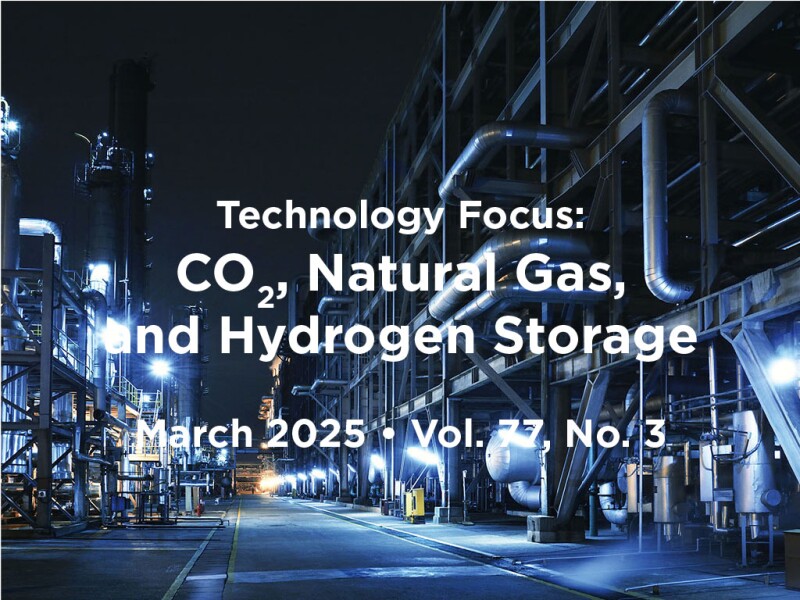Two significant trends currently shaping the industry are transitioning to a low-carbon economy and integrating artificial intelligence (AI) and machine learning (ML) to revolutionize design and operational processes. Transitioning to a low-carbon economy demands large-scale CO2, natural gas, and hydrogen storage. In this context, the application of AI/ML technology to uncover geochemical, microbial, geomechanical, and hydraulic mechanisms related to storage and solve complicated history-matching and optimization problems, thereby enhancing storage efficiency, has been prominently featured in recent publications.
Although still in the infancy stage, hydrogen is expected to play a pivotal role in the transition to a low-carbon economy. Thanks to its abundant storage capacity and widespread distribution, subsurface hydrogen storage, especially in porous media, is crucial for addressing the spatial and temporal imbalances between supply and demand. By optimizing storage-development plans with technical and economical efficiency, AI/ML is becoming a catalyst for scaling up subsurface hydrogen storage.
Carbon storage is relatively mature, with substantial knowledge gained from numerous pilot projects and ongoing commercial-scale projects worldwide. Its primary focus is leveraging the latest technologies, particularly AI and ML, to enhance performance and reduce cost through a smarter and more-automatic way of geological modeling, numerical simulation, and history‑matching.
Furthermore, to cope efficiently with the dynamic demand of a low-carbon energy mix and improve overall economics, an emphasis on repurposing and multipurposing storage sites (for example, converting natural gas storage to hydrogen storage) is emerging, blurring the boundary of storage sites with different storage media.
Looking forward, it is clear that the storage operations of carbon, hydrogen, and natural gas, the so-called “warehouse business” in the low‑carbon era, will become an important pillar for the global energy transition, with AI/ML accelerating the process.
This Month’s Technical Papers
Workflow Enables Technoeconomic Optimization of Underground Hydrogen Storage in Aquifers
Model-Reduction and Data-Assimilation Approach Enhances Carbon-Dioxide Plume Tracking
Porous Underground Gas Storage Can Rapidly Provide Multiple Services to the Grid
Recommended Additional Reading
SPE 220865 Optimizing Hydrogen Storage in the Subsurface Using a Reservoir-Simulation-Based and Deep‑Learning-Accelerated Optimization Method by Esmail Eltahan, The University of Texas at Austin, et al.
SPE 220026 Performance Comparison of Gradient-Free Optimization Methods for Well Placement and Well-Control Optimization for Geologic CO2 Storage by Imaobong Tom, University of Tulsa, et al.
SPE 222120 MAGCS: Machine-Assisted Geologic Carbon Storage by H.M. Alqassab, ExxonMobil, et al.
Kaibin Qiu, SPE, is a geomechanics adviser at SLB. He has more than 20 years of experience in the industry and has worked on many consulting projects in Malaysia, Iran, Egypt, Libya, India, Indonesia, Japan, Korea, and China. Qiu holds a BS degree in hydraulic and hydropower engineering and an MS degree in geotechnical engineering, both from Tsinghua University in China. In recent years, he has been involved in applying reservoir geomechanics for the exploration and development of high-pressure/high-temperature reservoirs, deep water, tight oil, tight gas, shale gas, and methane hydrate. Beyond geomechanics, Qiu also specializes in drilling engineering, integrating seismic to stimulation solutions for unconventionals, carbon capture and storage, and geothermal. He has authored more than 40 technical papers. Qiu is an Executive Editor for the peer-reviewed SPE Journal. He is also a member of the JPT Editorial Review Board.

